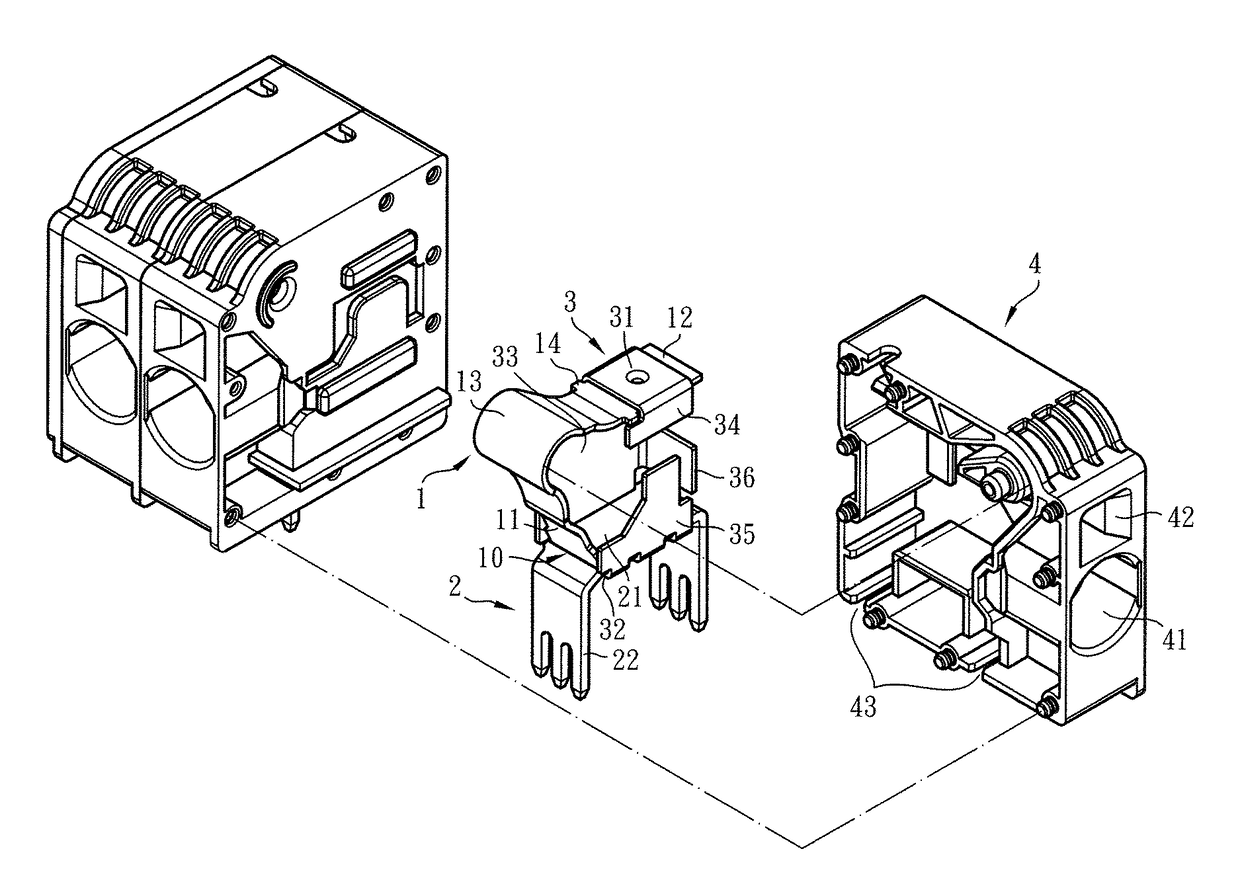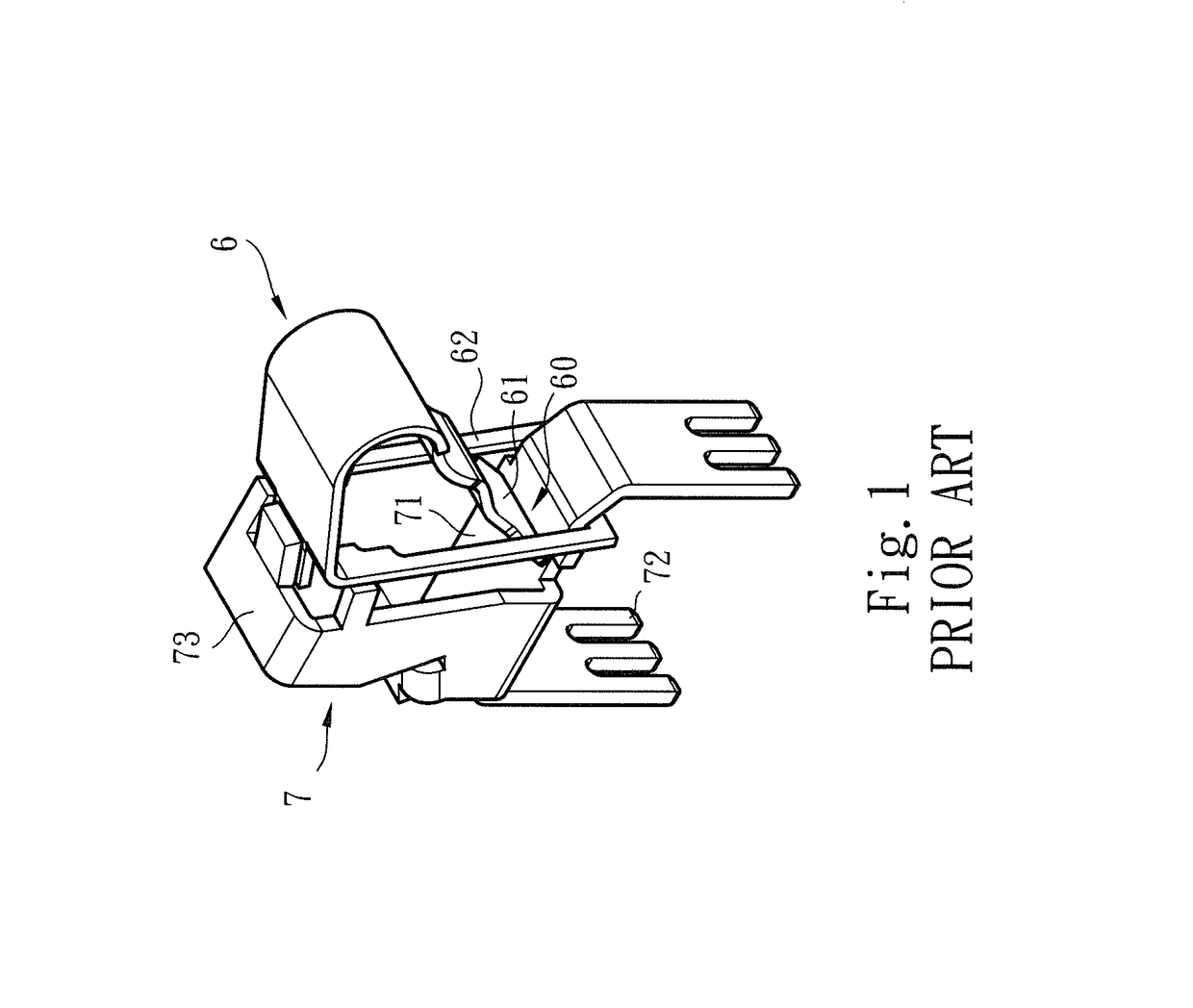Wire connection terminal structure
a wire connection and terminal technology, applied in the direction of connections, electrical equipment, connection contact material, etc., can solve the problems of complex structure of the conductive frame b>7/b>, unoptimized design form, large area of entirely stretched raw materials, etc., to improve the support strength of the entire wire connection terminal structure, prevent deformation, and improve the wire connection terminal structure
- Summary
- Abstract
- Description
- Claims
- Application Information
AI Technical Summary
Benefits of technology
Problems solved by technology
Method used
Image
Examples
Embodiment Construction
[0026]Please refer to FIGS. 3 and 5. According to a preferred embodiment, the wire connection terminal structure of the present invention includes a leaf spring 1, a conductive plate 2 and a fixing frame 3, which are mounted in an insulation case 4. The leaf spring 1 and the conductive plate 2 are framed and connected with the fixing frame 3. The conductive plate 2 is formed with abase section 21 assembled on the fixing frame 3 and at least one soldering leg 22 extending from the base section 21 out of the case 4. The leaf spring 1 is formed with an elastic swingable holding section 11 extending to a position in contact with the base section 21. The holding section 11 and the base section 21 define therebetween an elastic holding mouth 10. Preferably, the conductive plate 2 is made of a high-conductivity material (such as copper), which has an electrical conductivity better than the leaf spring 1 and the fixing frame 3. The leaf spring 1 is made of a material (such as elastic steel)...
PUM
 Login to View More
Login to View More Abstract
Description
Claims
Application Information
 Login to View More
Login to View More - R&D
- Intellectual Property
- Life Sciences
- Materials
- Tech Scout
- Unparalleled Data Quality
- Higher Quality Content
- 60% Fewer Hallucinations
Browse by: Latest US Patents, China's latest patents, Technical Efficacy Thesaurus, Application Domain, Technology Topic, Popular Technical Reports.
© 2025 PatSnap. All rights reserved.Legal|Privacy policy|Modern Slavery Act Transparency Statement|Sitemap|About US| Contact US: help@patsnap.com



